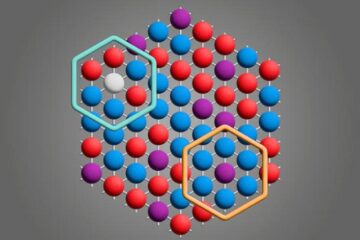Risk of Tuberculosis Doubles in First Year of HIV Infection

The risk of tuberculosis infection doubles within one year of HIV infection, according to a study published in the Jan. 15 issue of The Journal of Infectious Diseases, now available online. Scientists previously assumed that there was no increase in tuberculosis risk within the first few years of HIV infection. Pam Sonnenberg of the London School of Hygiene and Tropical Medicine and colleagues were therefore surprised by the results of their research on the two infections, which they conducted in South African gold miners.
The study was large, involving 23,874 miners from four mines, and retrospective in design, drawing its results from the medical records available for each miner. All subjects were black men between 18 and 65 years of age. They were divided into three groups: those who were HIV-negative throughout the study, those who were HIV-positive on study entry, and those whose infection status changed from negative to positive during the study. Miners were followed until they developed pulmonary tuberculosis, left the mines, or died. Tuberculosis incidence not only doubled within the first year of HIV infection but also increased four-fold after two years, with a further slight increase in those infected for longer periods of up to seven years.
Sonnenberg and colleagues explained that several characteristics of the gold mines greatly facilitated their research: a very high incidence of tuberculosis among the miners, due to crowded conditions and other work-related factors; the fact that the miners lived on-site at the mines, making their external environments relatively uniform; and the mines’ provision of free, high-quality health care to the miners, including a voluntary HIV testing program and tuberculosis screening and treatment programs. The unique setting of the gold mines also provides a caveat: because the study population was not diverse and was characterized by unusually high rates of tuberculosis, the results may not be applicable to all individuals with HIV infection.
In an editorial accompanying the study, Diane V. Havlir and colleagues from the University of California San Francisco said that this research suggests a level of immunodeficiency in HIV infection that has not been readily appreciated. They speculated that the risk for developing tuberculosis may increase early in HIV infection because of profound immune dysregulation. Another possible explanation, they noted, is that those who develop tuberculosis within the first year of HIV infection have a rapidly progressing form of HIV disease.
Both the study authors and the editorialists suggested that the results of this research may have major implications for planning public health interventions for the two diseases. “Tuberculosis is a leading cause of death among people infected with HIV worldwide,” said Havlir. “Perhaps the most immediate and universal implication of these data is the need to expand reliable and affordable HIV testing in tuberculosis-endemic areas like the South African gold mines.”
Media Contact
More Information:
http://www.idsociety.orgAll latest news from the category: Health and Medicine
This subject area encompasses research and studies in the field of human medicine.
Among the wide-ranging list of topics covered here are anesthesiology, anatomy, surgery, human genetics, hygiene and environmental medicine, internal medicine, neurology, pharmacology, physiology, urology and dental medicine.
Newest articles

Microscopic basis of a new form of quantum magnetism
Not all magnets are the same. When we think of magnetism, we often think of magnets that stick to a refrigerator’s door. For these types of magnets, the electronic interactions…

An epigenome editing toolkit to dissect the mechanisms of gene regulation
A study from the Hackett group at EMBL Rome led to the development of a powerful epigenetic editing technology, which unlocks the ability to precisely program chromatin modifications. Understanding how…

NASA selects UF mission to better track the Earth’s water and ice
NASA has selected a team of University of Florida aerospace engineers to pursue a groundbreaking $12 million mission aimed at improving the way we track changes in Earth’s structures, such…





















